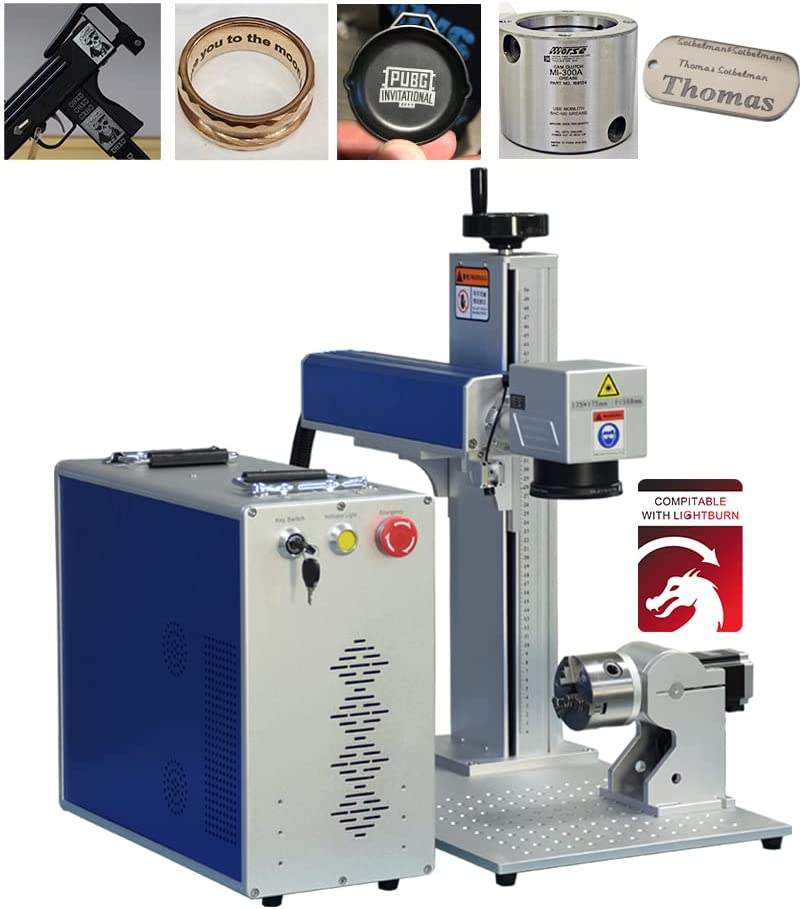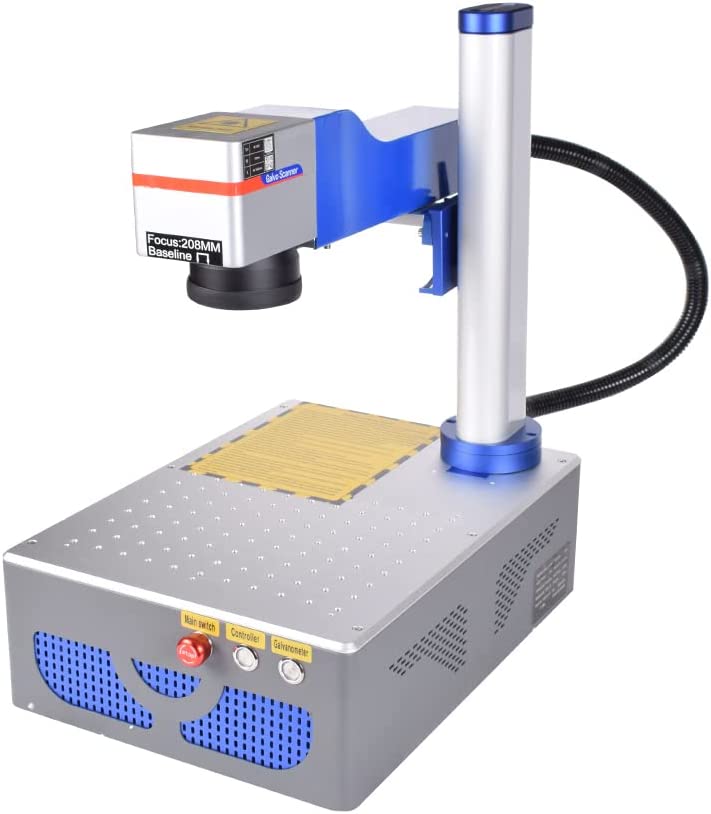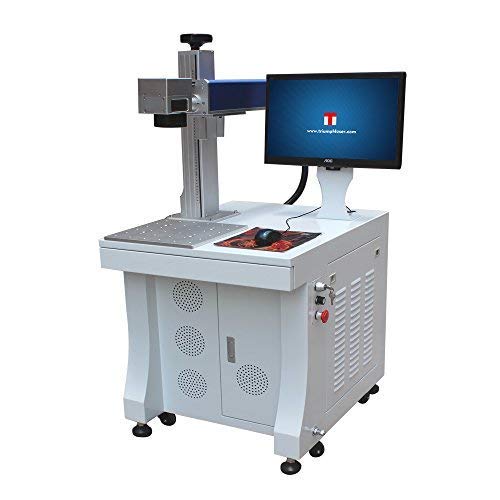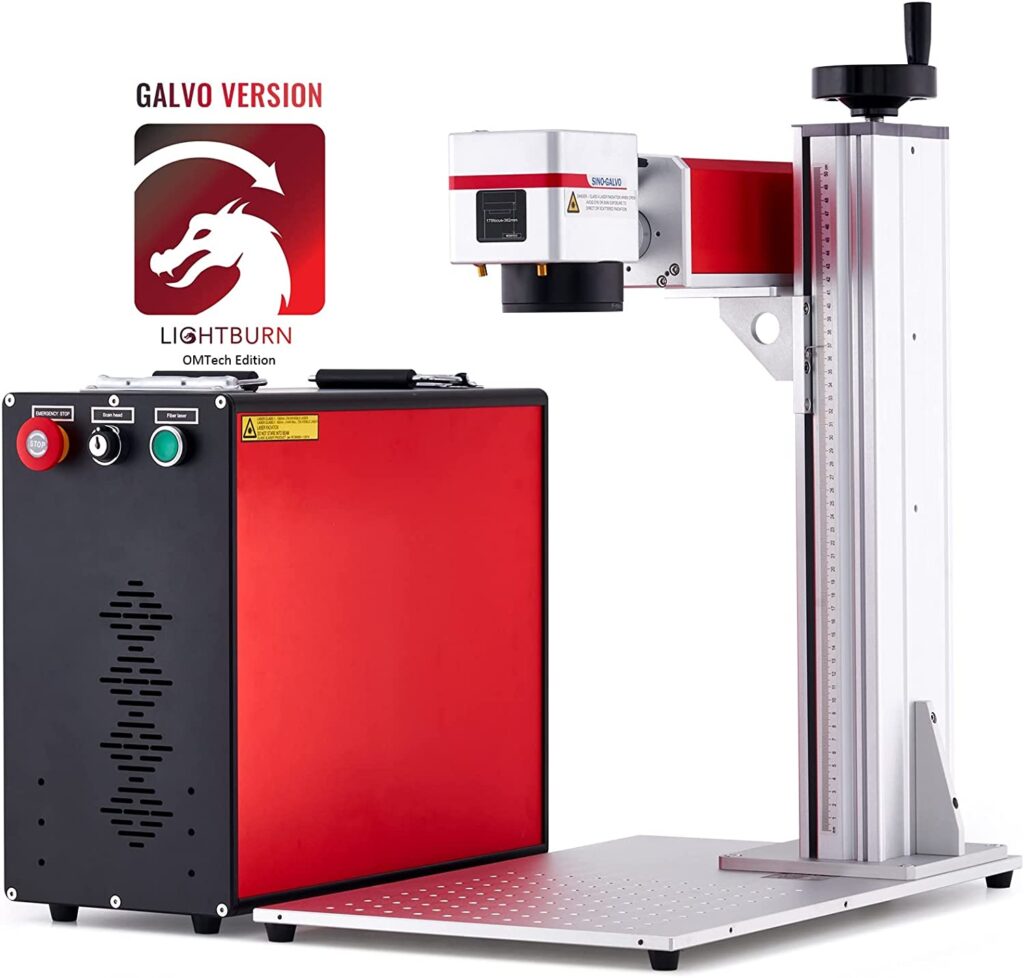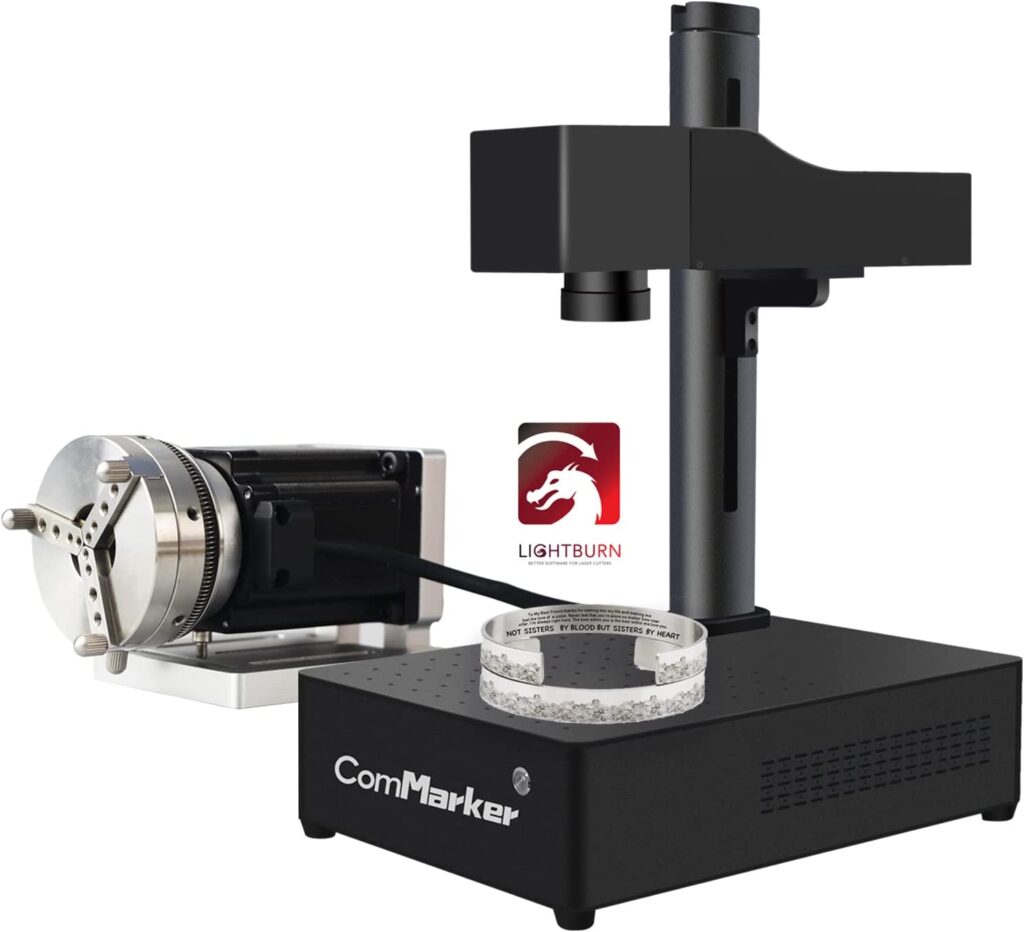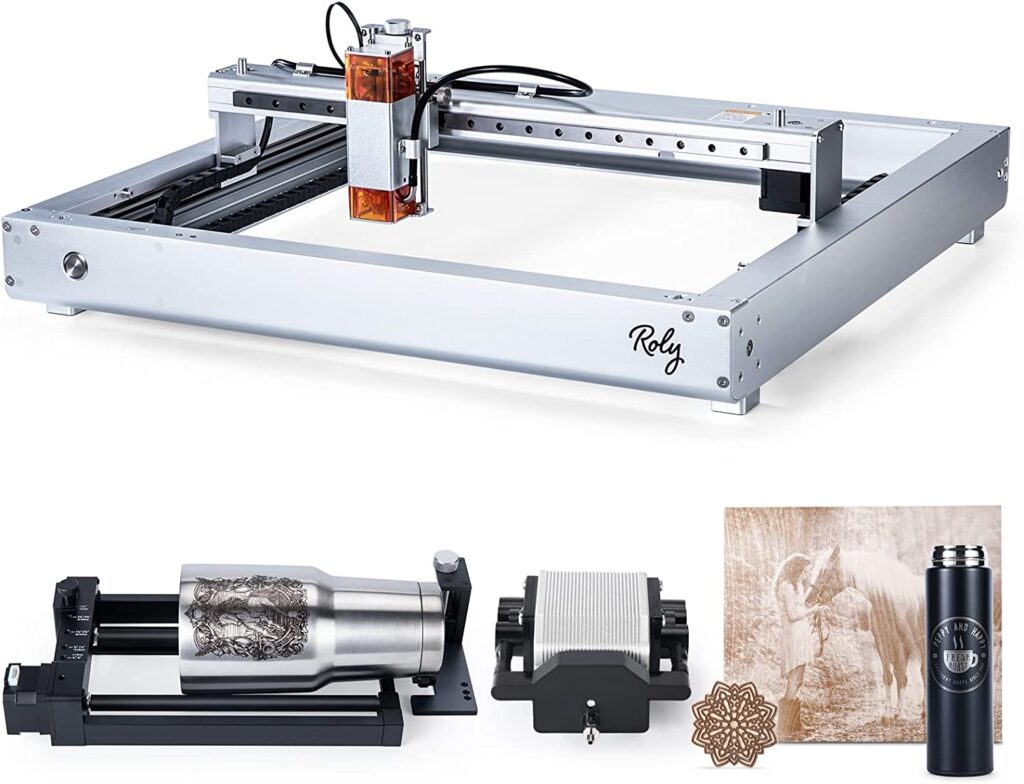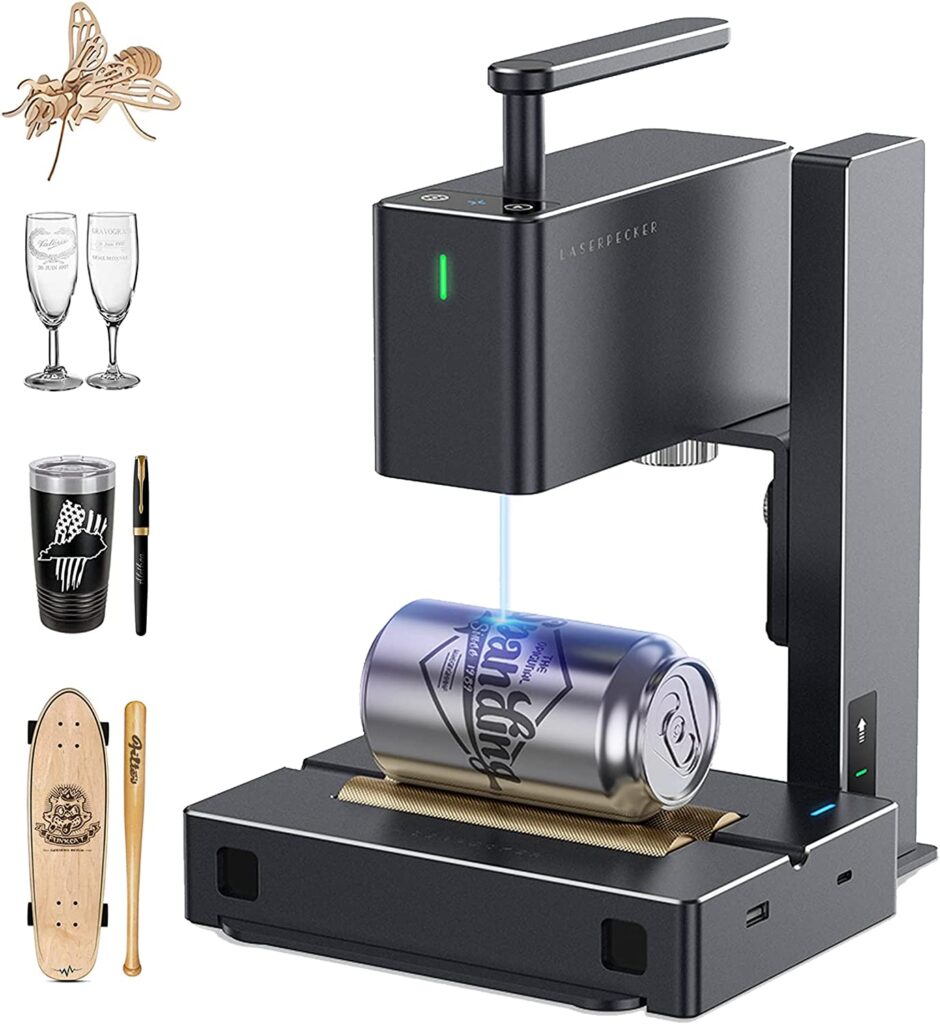Fiber laser engraver is significantly revolutionizing the laser metal cutting industry through their high cutting efficiency and low maintenance cost. They are highly effective for engraving and cutting metals like aluminum, copper, and brass. It is the fine laser point in fiber laser engravers that help them engrave with high precision. They are quite safer than CO2 lasers when used on the proper material.
Fiber laser engravers are useful for marking and engraving most metals as well as partial non-metal materials. Specifically, they work with aluminum, steel, gold, copper, ceramics, engineering plastics, painting materials, electroplating materials, epoxy resin, etc. The service life of these tools can be up to 100,000 hours because they don’t need much maintenance. You can get rid of hassles and confusion when choosing the best fiber laser engraver if you go through the following sections.
List of The Best Fiber Laser Engraver
IMAGE | PRODUCTS | RATING | |
Check out the thorough reviews of the best fiber laser engraver in 2024 below.
1. OMTech 30W Fiber Laser Engraver Marking Machine
Benefit from high precision, speed, and versatility with this best fiber laser engraver from OMTech. The adjustable pulse width and frequency help you to create colorful designs on black etchings, stainless steel, and anodized aluminum. The included LightBurn Galvo software provides you with infinite possibilities for laser markings. From 30W to 100W, a variety of fiber laser power models are available. The package contains the fiber laser marking machine, a Lightburn Galvo Version License Key (delivered by Email), protective eyewear, and instructions.
Key Features
- The galvanometric system offers excellent stability for engraving, rapid scanning, and turnaround.
- The compatible materials are silicone, gemstones, aluminum, steel, silicone, brass, and more.
- The compact F-Theta field lenses employ their air-spaced design, and anti-reflective and protective coatings to provide throughput with distortion below 1%.
- The working space (6.9 x 6.9 inches wide) and a red dot locator offer quick and precise calibration & focusing.
- The operating speed is up to 275.6 ips.
- The grid dots allow positioning bars to correctly hold your material.
- The EzCad2 software is compatible with 32 and 64-bit versions of Windows XP/Vista/7/8/10.
- Dimensions and weight: 17.8 x 22.1 x 27.6 inches; 64 pounds.
Pros And Cons
2. SFX 50W JPT Fiber Laser Engraver Machine
With this SFX 50W fiber laser engraver, you can rapidly find the focal length without using a ruler. Finding the focal length helps you to check if the red lines and red dots overlap on the surface where you want to mark. It is of high quality and easy to use. The SFX fiber laser engraver machine is also renowned for its great Tech support.
Key Features
- The LP E-20W/30W/50W laser source is used.
- The marking speed is up to 7000 mm/s.
- The repetition frequency is 1-600 kHz.
- The pulse duration is 200ns.
- The re-position accuracy is 0.002mm.
- The rate of electrical to optical conversion is up to 70%.
- BJ JCZ Board is used as the control board.
- The included EZCAD 2 software is compatible with Lightburn on Windows XP/Vista/7/8/10.
- The output power adjustment range is 10%-100%.
- The laser wavelength is 1064 nm.
- Quality aluminum is used in the construction of this tool.
- The marking area is 175 x 175 mm.
- The engraving depth is up to 1mm.
- The compatible materials are all metals like stainless steel, aluminum, copper, brass, etc.; and certain non-metals like ABS, nylon, PES, PVC, etc.
- Dimensions and weight: 31.1 x 20.08 x 31.89 inches; 131.7 pounds.
Pros And Cons
3. ComMarker 20W Fiber Laser Engraver for Mental, Tag, Jewelry
If you want to make your manual engraving task faster and more convenient then this ComMarker 20W fiber laser engraver can be one of the best fiber laser engravers for you. It is a rotary axis fiber laser engraver implemented with advanced technology. The machine benefits you with saving time and money, and easy installation. It can work on all types of metals like aluminum, stainless steel, silver, gold, alloy, etc. Also, it can work on most rubbers and plastics. Moreover, this engraving machine comes in handy to mark all types of characters and DIY patterns you prefer.
Key Features
- The marking speed is up to 15000 mm/s.
- The laser wavelength is 1064 nm.
- The minimum line width is 0.01 mm.
- The frequency range is 20 – 60 Hz.
- Up to 200 x 200 mm working area.
- The diameter of the rotary axis is in the range of 2-83 mm.
- The engraving effect of 20W-30W provides significant depth.
- The engraving effect of 50W-60W provides a significant depth and can also cut metal up to 1 mm in thickness.
- The fast red light positioning function can automatically mark in batches.
- The included software are LightBurn and EZCAD.
- The compatible operating systems are Windows 7/8/10/11.
- The supported graphics formats are JPG, JPEG, BMP, GIF, DST, DXF, AI, etc.
- Dimensions and weight: 7.87 x 7.87 x 5.91 inches; 0.423 ounces.
Pros And Cons
4. Ovsuqu Raycus 30W Fiber Laser Engraver
This 30W Raycus fiber laser engraver provides high single-pulse energy, high peak power, and optional spot diameter. Typically, it is used for tasks like precision processing, marking, and graphics engraving. When used as an engraver, it can work with aluminum, silver, and gold. The marking process offers more stable performance and lower cost than traditional lasers. All necessary accessories are included in the pack. You get goggles, a foot switch, a power line, U-disk software, a USB 2.0 line, and tool protection.
Key Features
- The service life is up to 100000 hours.
- The laser wavelength is 1064 nm.
- The working area is 200 x 200 mm.
- EzCad2 LITE software is included.
- The machine can work on materials like tungsten, platinum, titanium, carbide nickel, aluminum, carbon steel, stainless steel, copper, brass, gold, silver, etc. It can also work with certain non-metals like PVC, ABS, PES, nylon, etc.
- Dimensions: 15.75 x 13.78 x 19.69 inches.
Pros And Cons
5. Triumph 30W Fiber Laser Engraving Marking Machine
Triumph fiber laser engraving marking machine is very well made, easy to set up and get up and running. Using this machine, you can engrave stainless steel, steel, aluminum, copper, silver, gold, and other metal materials. You can use it to cut thin material through multiple passes. The included software lets you readily work on this machine.
Key Features
- The engraving area is 110 x 110mm.
- The engraving depth is less than 1 mm.
- An extra lens (200 x 200 mm) is included to engrave on a large area.
- The lifetime of the laser source is 100000 hours.
- The wavelength is 1064 nm.
- The laser pulse frequency is 20-80 kHz.
- The beam quality is less than 1.4M2.
- The laser power is 30W
- The engraving speed is less than 9000 mm/s
- The repetition precision is ±0.01mm.
- The line width is 0.02 mm.
- The cooling mode is Air Cooling Graphic.
- The EZcad software works with Autocad, Coreldraw, and Photoshop.
- The supported file formats are PLT, DXF, PCX, BMP, etc.
- A laser emission indicator transmits a visible signal during the discharge of accessible laser radiation.
- Safety interlocks prohibit customers to access laser and collateral radiation on dismissal or replacement of some part of the protective housing.
- Dimensions: 35.04 x 34.25 x 34.25 inches.
Pros And Cons
6. Roly 10W Laser Engraver for Wood, Metal and More
Are you looking for a user-friendly laser engraver? If yes then this Roly 10W laser engraver is one of the best fiber laser engravers to meet your needs. It is enclosed in a special optical acrylic. The enclosure filters the laser, discharges fumes, and decreases operating volumes. This machine is perfect for completing laser engraving at home without compromising the engraving accuracy. The pack contains air assist (30 L/min), rotary (end support included for tapered tumblers), and honeycomb table. You get all the tools required to accomplish various engraving jobs.
Key Features
- The engraving speed is up to 18,000 mm/min.
- It can cut 6 mm plywood in a single pass at 240 mm/min.
- The blue laser focuses down to 0.08 x 0.8 mm
- 92 mm Z-axis travel allows you to switch between tumbler and flat pieces in seconds. No need to use extensions or raise the whole machine.
- The included camera is compatible with LightBurn software. The camera accelerates job placement and explores the maximum benefits of your material.
- Dimensions and weight: 18.5 x 9.3 x 25.8 inches; 58.6 pounds.
Pros And Cons
7. LaserPecker 2 Pro Laser Engraving Machine with Roller
This LaserPecker 2 Pro laser engraver is compact and lightweight, and it is a perfect tool for those willing to elevate their creativity. The included handle facilitates handheld engraving. The dimensions of the engraving space will not affect the engraver’s efficiency. Since it doesn’t need complex assembly, you can instantly get started on your engraving projects in seconds. You can use it with your smartphone or PC.
A power bank and an engraving material pack (with various engraving materials) are included in the pack. The power bank removes the dependency on a power cord and enriches the user experience. The material pack helps explore your creativity when creating new designs on various types of materials.
Key Features
- The multipurpose electric roller activates “Cylinder mode” on cylindrical surfaces such as pens and bottles.
- “Trolley mode” and “Slab mode” increases the engraving length up to 196 inches (width is 4 inches).
- The engraving speed of 36000 mm/min makes it one of the best laser engraver.
- The graphic preview speed is up to 225000 mm/min.
- The supported file formats are PNG, JPG, G-code, and more.
- Dimensions and weight: 17.95 x 11.34 x 7.56 inches; 9.37 pounds.
Pros And Cons
How To Pick The Best Fiber Laser Engraver?
After considering the following parameters in your buying decision, you can pick the best fiber laser engraver meeting your needs.
1. Laser power
You must note the upper power limit of a fiber laser if you want to use a fiber laser engraver for heavy-duty applications. A more powerful fiber laser can cut through or engrave strong materials and quickly accomplish the job. Hence, it improves your process’ throughput. A 50W fiber laser works well in most cases. You may go for higher-powered lasers if you want to work with hard metals like carbon steel or titanium. You can even get a fiber laser engraver with laser power of up to 500W.
2. Laser options
The fiber laser engraver machines incorporate options like a laser safety housing, a dust extraction system, an air knife (to avoid dust build-ups on the lens), and an HMI (to easily adapt the laser for various operations). The availability of various laser options not only provides you convenience but also indicates the versatility of the fiber laser engraver.
3. Lens features
The lens of a fiber laser is as important as its doping agent. It helps focus all the light radiated by the rare earth elements within the optic fiber. Hence, it increases the power density and allows laser engravers to create very fine details. You must consider parameters like the spot size, focal length, and the number of passes.
You should pay much attention to the laser’s beam diameter if you want your fiber laser engraver to show elaborately detailed pieces. Other parameters like pulse repetition rate and scanning speed are also important in deciding the speed of fiber laser engraving.
4. Continuous or pulse operation
During fiber laser engraving operations, deep cuts or marks are rarely processed through only a single continuous contact with the laser. Rather, energy is transmitted to the same spot in short yet regular pulses.
On the other hand, fiber laser engravers with pulse operations ensure no drop in quality. Ascertain that the machine can deliver pulses quickly enough to cut through metals. You should try to choose a fiber laser engraver that supports pulse operation in a range of 50,000 to 100,000 pulses per second.
5. IP rating
The IP rating is less related to the performance of a fiber laser engraver and more related to how effectively it can sustain harsh environments. It denotes the ability of the unit to stay protected against damage from dust, debris, and water. If you want to set up a fiber laser engraver in a manufacturing plant with other equipment, you must consider the explicit IP requirement that the engraver’s location needs.
6. Other features
It is also important to know the electrical certifications in your country. Similar to any electrical device, if the laser doesn’t fulfill these requirements, you may be banned from installing it. For example, the “CE” certification exists in Europe; “UL” certification exists in the US; and “CSA” exists in Canada.
Frequently Asked Questions When Picking Fiber Laser Engraver
1. How does a fiber laser engraver work?
In a fiber laser engraver, the laser beam is first transmitted via optical fibers and then projected over the substrate. As light passes through the optical fibers, it is shot with photons. This leads to a huge energy buildup in the system. The particular energy is then inserted through a lens and is concentrated to precisely mold the engraved materials.
2. Before choosing a fiber laser engraver, what parameters shall you consider to benefit from the convenient operation?
To benefit from the convenient operation, you must check that the fiber laser engraver has an enclosure to protect the engraving area. It should have an air knife to remove particulates from the workpieces, and filtered vents to draw out the dust produced by the process. Focusing on these aspects before buying a fiber laser engraver benefits you with hours of convenience while using it.
3. Why choose a fiber laser for metal engraving?
Fiber lasers provide several benefits that make them suitable for metal engraving.
- (i) Firstly, optical fibers provide enhanced beam quality owing to their light-guiding properties. So, they are efficient at etching metals.
- (ii) They consume low power and come with a small heat management requirement.
- (iii) They have low maintenance requirements and a low cost of ownership. So, they are perfect for use in the work area of automated production lines.
- (iv) The fiber laser source provides a high mean time between failures (approx. 100,000 hours).
Final Thoughts
Fiber laser engravers are used in various industries including the hardware tool industry, jewelry industry, mechanical and automotive industry, instrument industry, craft and advertising industry, packaging industry, etc. They can mark most metal materials and certain non-metallic materials like plastic. They use high-quality laser beams to ensure precise engraving results. The best fiber laser engraver benefits you with precise calibration and focusing, stable performance, quick marking speed, long lifespan, low power consumption, and low maintenance.
Enjoyed this article on the best fiber laser engraver? Then be sure to check out our other guide of the best laser cutter engraver.


